Australian Tropical Rainforest Plants - Online edition
Abelmoschus moschatus subsp. tuberosus (Span.) Borss.Waalk.

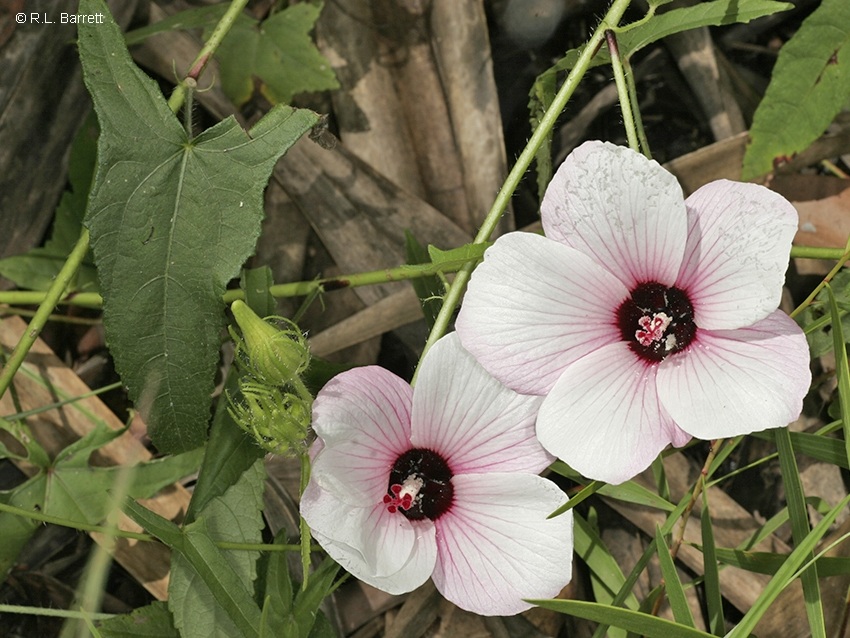
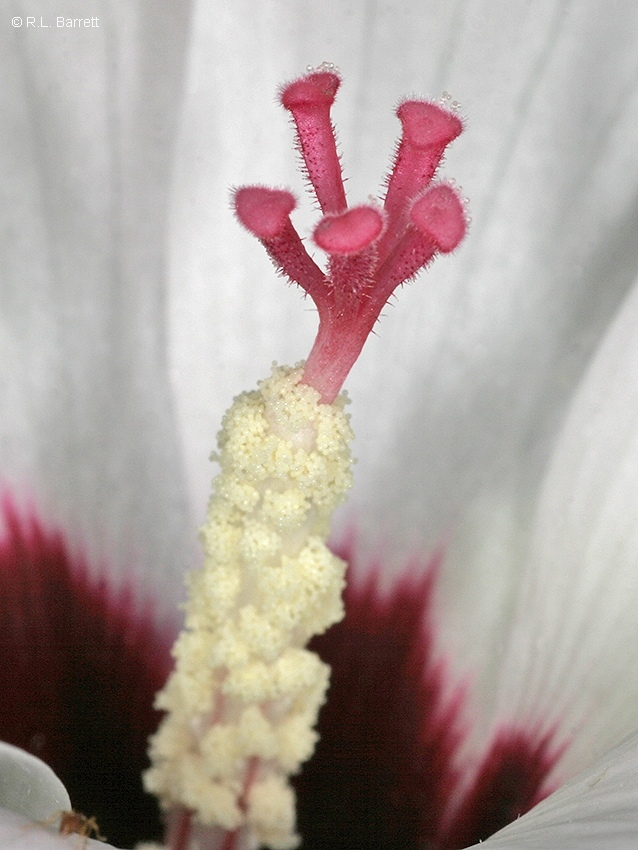
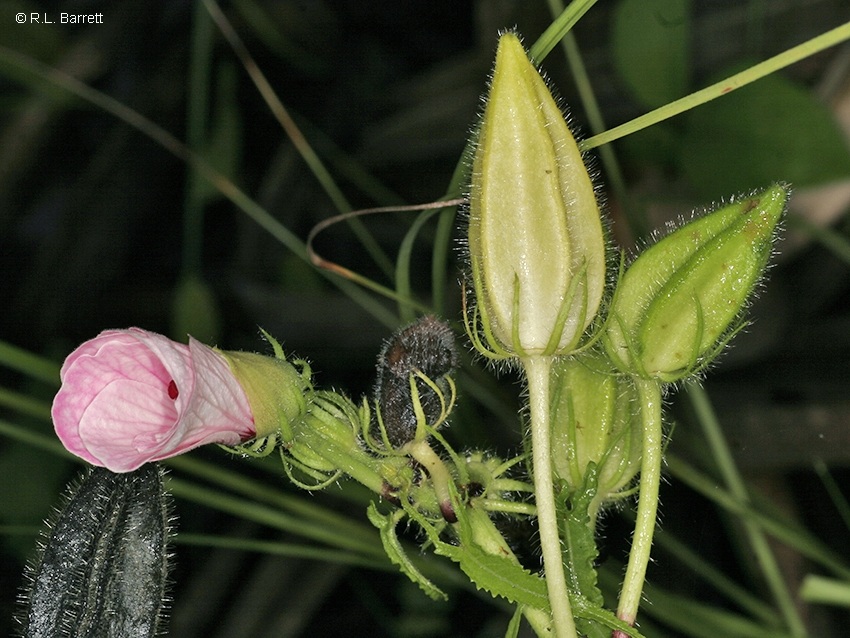
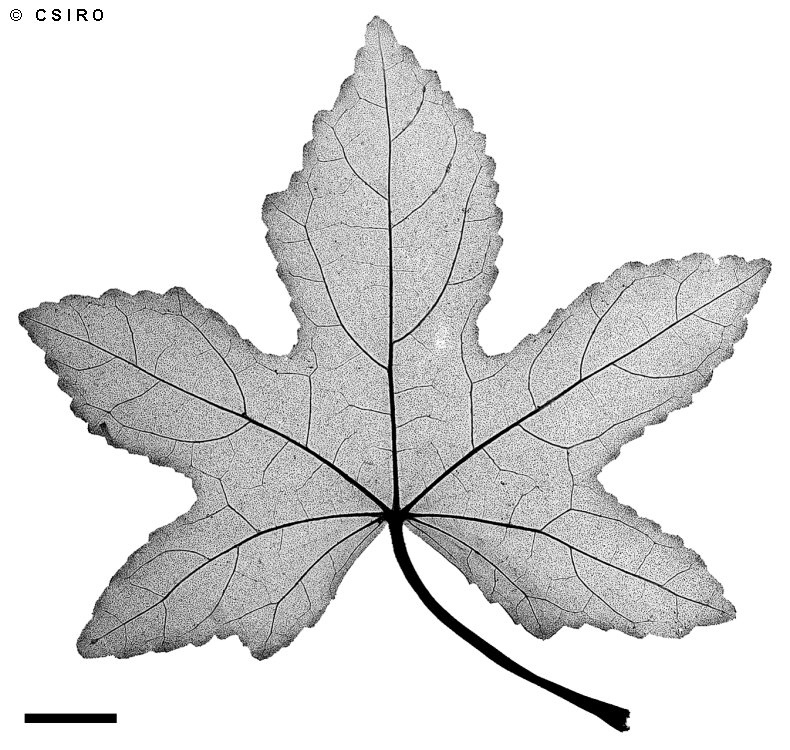

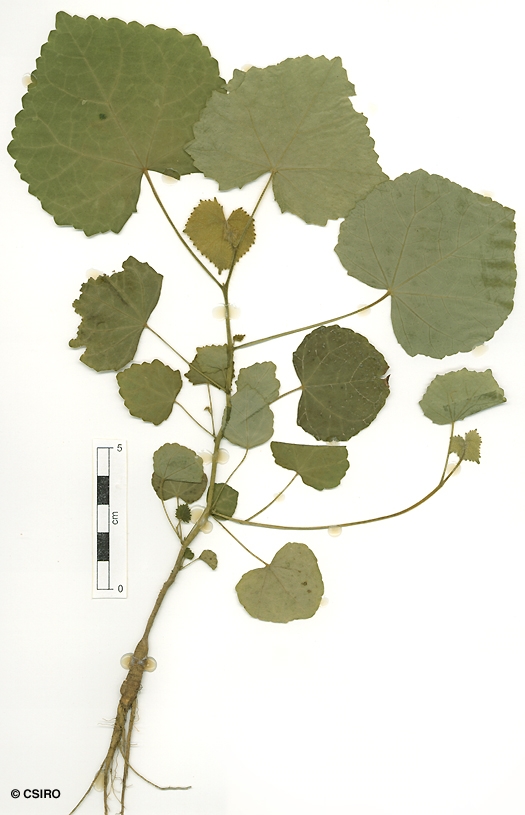
Borssum Waalkes, J. van (1966) Blumea 14: 93.
Musk Mallow; Ambrette; Musk Okra; Native Rosella
Occasionally grows to a height of 1 m or more but usually flowers and fruits when smaller.
Leaves variable, usually lobed in various ways, leaf blades about 6-7 x 6-9 cm, venation palmate. Petioles about 4-10 cm long. Stipules about 5-11 mm long, filiform, clothed in translucent hairs. Stems, petioles and upper and lower leaf blade surfaces clothed in a mixture of long, translucent, simple and stellate hairs.
Epicalyx of 10-13 lobes, hairy on the inner surface. Calyx bilabiate or 3-lobed, split down one side, hairy. Petals or corolla lobes about 55-70 mm long, centre of the corolla red. Anther filaments fused into a tube surrounding the style with the stigmas red and hairy at the apex. Staminal tube fused to the corolla.
Fruits 5-lobed, about 33 mm long, hairy, epicalyx persistent at the base. Seeds reniform, longitudinally striated.
Cotyledons +/- orbicular, cordate at the base, about 13-18 x 14-17 mm, on long petioles, about 13-15 mm. Stem, petiole, hypocotyl and upper and lower surfaces of the cotyledons clothed in erect white hairs. First pair of true leaves clothed in erect white hairs, margin crenate. At the tenth leaf stage: stellate hairs also visible on the underside of the leaf blade. Petioles long, longer than the leaf blades. Stipules hairy, about 2 mm long, caducous. Stem clothed in long (1-2 mm) translucent hairs. Stem, petiole and the underside of the leaf blade clothed in scattered, clear, sticky, spherical glands. Taproot thick and tuberous, carrot-like (Daucus carota). Seed germination time 9 to 34 days.
Occurs in WA, NT, CYP, NEQ, CEQ and southwards to south-eastern Queensland. Altitudinal range in northern Australia from near sea level to 650 m. Usually grows in open forest but occasionally found in monsoon forest and vine thickets. Also occurs in Asia and Malesia.
This large flowered shrub has potential for tropical gardens but is probably short lived.
This species may have medicinal properties.
Hibiscus longifolius var. tuberosus Span., Linnaea 15: 170(1841), Type: Roti, Spanoghe s. n.; holo: L 908.135 - 574. Fide Borssum Waalkes (1966). Hibiscus rhodopetalus (F.Muell.) Benth. var. rhodopetalus, Bibliotheca Botanica 89(4): 956(1928). Hibiscus rhodopetalus f. typica Domin, Bibliotheca Botanica 89(4): 956(1928). Abelmoschus rhodopetalus F.Muell., Fragmenta Phytographiae Australiae 2: 113(1861), Type: Ad rivulos silvaticos juxta partem superiorem fluvii Brisbane et ad promontorium Point Pearce. Syn: MEL, BM. Hibiscus rhodopetalus (F.Muell.) Benth., Flora Australiensis 1: 209(1863). Hibiscus rhodopetalus var. chillagoensis Domin, Bibliotheca Botanica 89(4): 956(1928), Type: prope Chillagoe haud rara (DOMIN II. 1910). Hibiscus rhodopetalus (F.Muell.) Benth. f. rhodopetalus, Bibliotheca Botanica 89(4): 956(1928).





